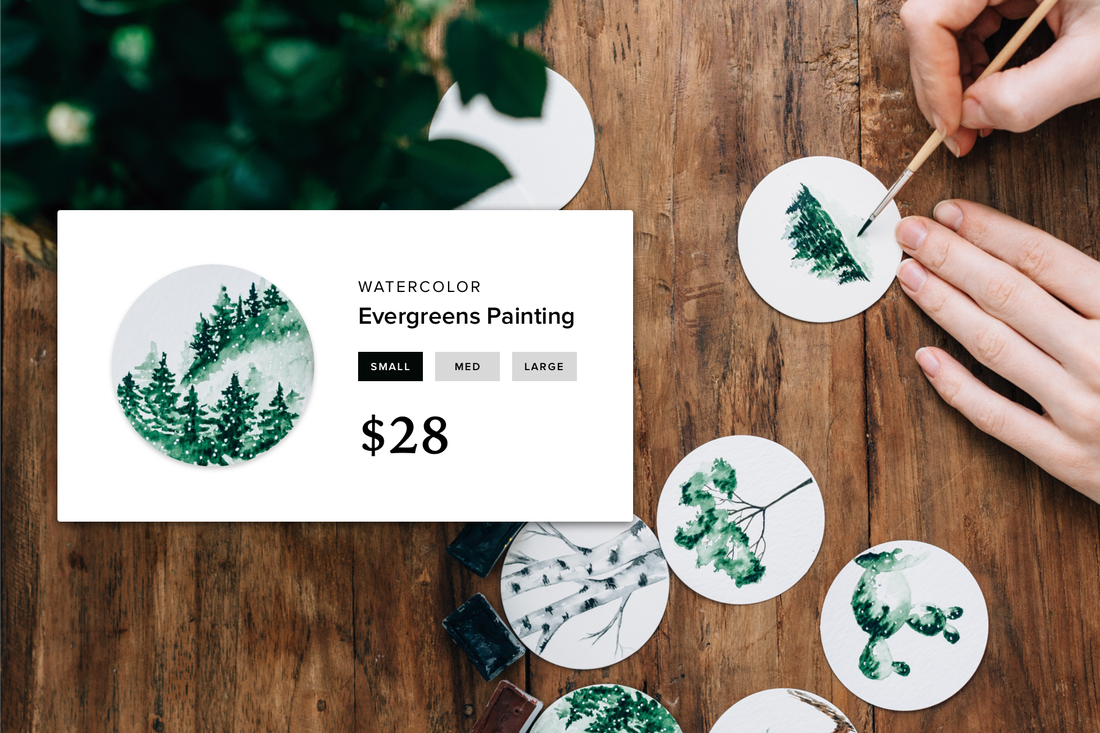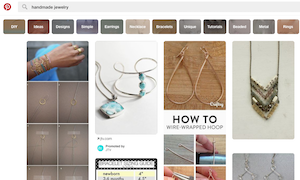Building your own website can be a fun, creative process, but you won't necessarily generate income by simply hanging your digital shingle. If you aim to make money with your blog, consider these methods for turning your site into a revenue stream.
Whatever money-making strategy you choose, you'll need to draw traffic to your website—and you're more likely to make more money with more visitors, or solid site traffic in a niche that advertisers consider lucrative.
Provide exceptional content, whether you're writing hilarious blog posts, reporting useful and unique info on your industry, reviewing products, giving away gift cards or free product samples or posting insightful podcasts or how-to videos.
You can draw visitors by using social media, search engine optimization (SEO)—keywords and phrases that help the right audience find you—or traffic-building apps, and by posting comments on other sites, with a link to your own. When you've posted new content, use Twitter, Facebook or other social media platforms to let people know.
Weebly's app center offers free and premium options aimed at boosting site traffic. You also can add apps that make your site more engaging by enabling testimonials or other visitor comments. Build an email list to expand your audience. In fact, writer Jon Morrow says on the SmartBlogger site that developing an email list is vital to making money on your blog, and suggests offering a freebie in exchange for addresses.
With those ideas in mind, here are several avenues for making money from your website.
1. Become an e-tailer. If you have goods or services to sell, your blog or website is a great place to do it directly. Whether you design children's apparel, build handmade guitars, take gorgeous photos or offer web consulting services, an intuitive eCommerce platform like Weebly's makes it easy to set up shop, process sales and compete with big online retailers in both aesthetics and technology.
Besides offering any number of physical goods, you might sell gift cards, tickets to events at your brick-and-mortar business, or memberships to your farmshare. Your site may generate sales on its own or expand your in-person business, if you have one.
Some entrepreneurs, teens included, make big money with their online wares, so don't be afraid to think big.
If you set up your site as more of a content-focused blog than a store, but want to sell something, you may need a different approach.
2. Offer paid content. If your content is popular and unique enough, you may be able to generate income by selling subscriptions to a paid newsletter or building a paywall to your proprietary materials. Morrow writes that once you've built an email list, you should send your subscribers material that gains their trust, then offer products or services, digital or physical—anything from software, music or templates to books, design, marketing services or any item you might find in a store.
Medium notes that you can also offer visitors an individual article or video preview, then allow them to pay a small amount, under a dollar, to view the full content.
Through Weebly, you can offer your customers the ability to view and download exclusive material and digital goods.
3. Build an online course or seminar. This falls in the paid-content ballpark but can be more interactive than simply posting digital goods for sale. Perhaps you offer valuable coaching, seminars or instruction. You can use Skype, videos, podcasts or all three, in addition to printable materials.
Build an audience with interesting free content that will entice them to pay to learn more.
"An online course is an excellent way to monetize your blog. Bloggers who have established authority and the trust of their audience can offer a set of skills in a packaged deal, saving their customers the time, effort and stress of collecting all of that knowledge elsewhere," SEO and digital marketing expert Bradley Shaw says.
4. Consider native advertising. These pieces look like other articles on a blog or news site, when really they are paid ads promoting a product or company. Newspaper advertorials are a kind of native advertising, as are sponsored posts on social media, according to the Native Advertising Institute. The group describes native advertising as relevant and valuable content matching the "form, feel and function" of other material on the medium presenting it.
(A quick Google search shows confusion and disagreement on the difference between native advertising and sponsored content. Some bloggers draw a distinction between the direct promotion in native advertising versus what may be valuable, less promotional information in corporate-sponsored content. Setting aside the head-scratching, it's clear there's more than one way to host paying advertisers and their content on your site.)
If you want to go this route, look for potential advertisers whose products, services or websites relate to your blog content. Depending on your site, you might find local advertisers, or businesses in related fields or otherwise aligned to your blog content, regardless of location.
Good ethics demand that you be transparent with your readers; let them know you receive payment from these advertisers. You'll want to distinguish it from your own, independent content. Federal Trade Commission policy, which prohibits deceptive advertising, calls for disclosure on ads that appear to be regular articles. Here's the commission's guidance on the topic.
5. Use click-per-sale affiliate marketing. In this scenario, you provide links to a business and earn a percentage of sales when your readers click and make a purchase. You might add the link to one of your posts or display products that you recommend to your audience. Amazon offers an easy-to-use affiliate program. You advertise the products on your website and earn when visitors click and buy.
Search the web for affiliate marketing programs or networks to find other outlets for this type of enterprise. Here's one publication's list of the top click-per-sale affiliate networks.
Again, be transparent and clearly disclose if you're being paid to include links of any kind in your blog content.
6. Use pay-per-click advertising. This is a similar revenue concept that involves companies paying you to link to their websites; you might, for instance, mention companies or products in one of your blog posts and earn income when your visitors click on them.
As a Weebly senior community specialist explained in the online forum last year, affiliate marketing companies are the best sources of major advertisers for blogs.
Google AdSense allows businesses to place ads on your blog; you'll earn money when visitors click on the ads, and will be paid once you've reached a certain threshold. You choose the types of ads and their placement on your site, and Google handles the billing and payments. (See Google policies for more specifics.)
High-traffic sites centered on one topic do the best, according to Google, which says the three most successful types are blogs with regularly updated content; forum sites that appeal to certain interest or hobby communities; and, free online tool sites for developers or those who hire them.
Weebly provides a Google AdSense feature in the Commerce section of your editing toolbox. Here are instructions for using AdSense with a Weebly blog.
7. Seek donations. Major newspapers are doing this these days, public television has done so for decades, so why shouldn't you ask your loyal readers you contribute to your site? Weebly allows you to install a PayPal donation button to your blog. It couldn't hurt to ask.
8. Sell your successful site. This may not be what you have in mind if you're starting a small, cottage-industry website, and the idea of making millions selling your site to a big Internet player may be little more realistic than planning an NBA career. Bear in mind, however, that Yahoo! started as a web guide. What Laurel Touby started in the late 90s as, in her words, "a humble little directory on someone else's website" grew into MediaBistro.com, a freelance writer-focused networking site that she sold for $23 million in 2007.
Whatever kind of blog you build, make sure it's interesting and enjoyable for you—preferably a passion. The more you love what you write or sell, the more others are likely to gravitate to your website.
Provide exceptional content, whether you're writing hilarious blog posts, reporting useful and unique info on your industry, reviewing products, giving away gift cards or free product samples or posting insightful podcasts or how-to videos.
You can draw visitors by using social media, search engine optimization (SEO)—keywords and phrases that help the right audience find you—or traffic-building apps, and by posting comments on other sites, with a link to your own. When you've posted new content, use Twitter, Facebook or other social media platforms to let people know.
Weebly's app center offers free and premium options aimed at boosting site traffic. You also can add apps that make your site more engaging by enabling testimonials or other visitor comments. Build an email list to expand your audience. In fact, writer Jon Morrow says on the SmartBlogger site that developing an email list is vital to making money on your blog, and suggests offering a freebie in exchange for addresses.
With those ideas in mind, here are several avenues for making money from your website.
1. Become an e-tailer. If you have goods or services to sell, your blog or website is a great place to do it directly. Whether you design children's apparel, build handmade guitars, take gorgeous photos or offer web consulting services, an intuitive eCommerce platform like Weebly's makes it easy to set up shop, process sales and compete with big online retailers in both aesthetics and technology.
Besides offering any number of physical goods, you might sell gift cards, tickets to events at your brick-and-mortar business, or memberships to your farmshare. Your site may generate sales on its own or expand your in-person business, if you have one.
Some entrepreneurs, teens included, make big money with their online wares, so don't be afraid to think big.
If you set up your site as more of a content-focused blog than a store, but want to sell something, you may need a different approach.
2. Offer paid content. If your content is popular and unique enough, you may be able to generate income by selling subscriptions to a paid newsletter or building a paywall to your proprietary materials. Morrow writes that once you've built an email list, you should send your subscribers material that gains their trust, then offer products or services, digital or physical—anything from software, music or templates to books, design, marketing services or any item you might find in a store.
Medium notes that you can also offer visitors an individual article or video preview, then allow them to pay a small amount, under a dollar, to view the full content.
Through Weebly, you can offer your customers the ability to view and download exclusive material and digital goods.
3. Build an online course or seminar. This falls in the paid-content ballpark but can be more interactive than simply posting digital goods for sale. Perhaps you offer valuable coaching, seminars or instruction. You can use Skype, videos, podcasts or all three, in addition to printable materials.
Build an audience with interesting free content that will entice them to pay to learn more.
"An online course is an excellent way to monetize your blog. Bloggers who have established authority and the trust of their audience can offer a set of skills in a packaged deal, saving their customers the time, effort and stress of collecting all of that knowledge elsewhere," SEO and digital marketing expert Bradley Shaw says.
4. Consider native advertising. These pieces look like other articles on a blog or news site, when really they are paid ads promoting a product or company. Newspaper advertorials are a kind of native advertising, as are sponsored posts on social media, according to the Native Advertising Institute. The group describes native advertising as relevant and valuable content matching the "form, feel and function" of other material on the medium presenting it.
(A quick Google search shows confusion and disagreement on the difference between native advertising and sponsored content. Some bloggers draw a distinction between the direct promotion in native advertising versus what may be valuable, less promotional information in corporate-sponsored content. Setting aside the head-scratching, it's clear there's more than one way to host paying advertisers and their content on your site.)
If you want to go this route, look for potential advertisers whose products, services or websites relate to your blog content. Depending on your site, you might find local advertisers, or businesses in related fields or otherwise aligned to your blog content, regardless of location.
Good ethics demand that you be transparent with your readers; let them know you receive payment from these advertisers. You'll want to distinguish it from your own, independent content. Federal Trade Commission policy, which prohibits deceptive advertising, calls for disclosure on ads that appear to be regular articles. Here's the commission's guidance on the topic.
5. Use click-per-sale affiliate marketing. In this scenario, you provide links to a business and earn a percentage of sales when your readers click and make a purchase. You might add the link to one of your posts or display products that you recommend to your audience. Amazon offers an easy-to-use affiliate program. You advertise the products on your website and earn when visitors click and buy.
Search the web for affiliate marketing programs or networks to find other outlets for this type of enterprise. Here's one publication's list of the top click-per-sale affiliate networks.
Again, be transparent and clearly disclose if you're being paid to include links of any kind in your blog content.
6. Use pay-per-click advertising. This is a similar revenue concept that involves companies paying you to link to their websites; you might, for instance, mention companies or products in one of your blog posts and earn income when your visitors click on them.
As a Weebly senior community specialist explained in the online forum last year, affiliate marketing companies are the best sources of major advertisers for blogs.
Google AdSense allows businesses to place ads on your blog; you'll earn money when visitors click on the ads, and will be paid once you've reached a certain threshold. You choose the types of ads and their placement on your site, and Google handles the billing and payments. (See Google policies for more specifics.)
High-traffic sites centered on one topic do the best, according to Google, which says the three most successful types are blogs with regularly updated content; forum sites that appeal to certain interest or hobby communities; and, free online tool sites for developers or those who hire them.
Weebly provides a Google AdSense feature in the Commerce section of your editing toolbox. Here are instructions for using AdSense with a Weebly blog.
7. Seek donations. Major newspapers are doing this these days, public television has done so for decades, so why shouldn't you ask your loyal readers you contribute to your site? Weebly allows you to install a PayPal donation button to your blog. It couldn't hurt to ask.
8. Sell your successful site. This may not be what you have in mind if you're starting a small, cottage-industry website, and the idea of making millions selling your site to a big Internet player may be little more realistic than planning an NBA career. Bear in mind, however, that Yahoo! started as a web guide. What Laurel Touby started in the late 90s as, in her words, "a humble little directory on someone else's website" grew into MediaBistro.com, a freelance writer-focused networking site that she sold for $23 million in 2007.
Whatever kind of blog you build, make sure it's interesting and enjoyable for you—preferably a passion. The more you love what you write or sell, the more others are likely to gravitate to your website.
 Dinah W. Brin A freelance reporter and writer based in Philadelphia, Pa., Dinah previously worked as a staff reporter for The Associated Press and Dow Jones Newswires.
Dinah W. Brin A freelance reporter and writer based in Philadelphia, Pa., Dinah previously worked as a staff reporter for The Associated Press and Dow Jones Newswires.





